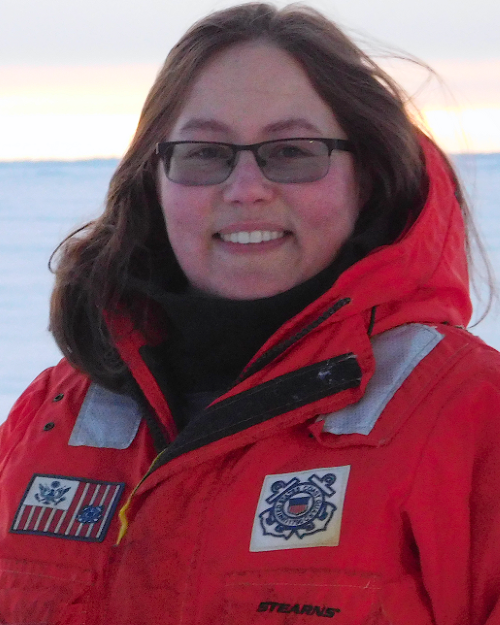
Savannah Sandy
Ph.D. Student
Physical Oceanography
College of Fisheries and Ocean Sciences
2150 Koyukuk Drive
107 O'Neill Bldg
Fairbanks, AK 99775
ssandy3@alaska.edu
Education
University of Alaska Fairbanks
M.S. Oceanography
2022
2022
West Texas A&M University
M.A. Music (Composition)
2011
Eastern New Mexico University
Eastern New Mexico University
B.S. Computer Science
2009
Thesis
Automating the Acoustic Detection and Characterization of Sea Ice and Surface Waves
Advisor
Selected Publications
Sandy, S.J., Danielson, S.L., and Mahoney, A.R. 2022. Automating the Acoustic Detection
and
Characterization of Sea Ice and Surface Waves. Journal of Marine Science and Engineering,
10(11), 1577. DOI: https://doi.org/10.3390/jmse10111577
Biography
Savannah Sandy is a PhD student in the Department of Oceanography at the University
of Alaska Fairbanks College of Fisheries and Ocean Sciences, studying physical oceanography
under Dr. Seth Danielson. She graduated in 2022 from UAF with a M.S. in Oceanography,
but felt that this was not quite enough and plans to continue studying the fascinating
physical oceanographical processes in the Arctic. Her work focuses on using acoustics
to study sea ice in the northeast Chukchi Sea.
Research Overview
Monitoring the status of Arctic marine ecosystems is aided by multi-sensor oceanographic
moorings that autonomously collect data year-round. In the northeast Chukchi Sea,
an ASL Environmental Sciences Acoustic Zooplankton Fish Profiler (AZFP) has collected
data from the upper 30 m of the water column every 10-20 seconds since 2014. Using
this nearly continuous dataset, I describe the processing of the AZFP’s 455 kHz acoustic
backscatter return signal for the purpose of developing methods to assist in characterizing
local sea ice conditions. By applying a self-organizing map machine learning algorithm
to 15-minute ensembles of these data, I am able to accurately differentiate between
the presence of sea ice and open water and thus characterize statistical properties
of the ice drafts and surface wave height envelopes. The ability to algorithmically
identify small-scale features within the information-dense acoustic dataset enables
efficient and rich characterizations of sea ice conditions and the ocean surface wave
environment. Corrections for instrument tilt, speed of sound, and water level allow
us to resolve the sea surface reflection interface to within approximately 0.06±0.09
m. Automating the acoustic data processing and alleviating labor- and time-intensive
analyses adds additional value to the AZFP backscatter data, which is otherwise used
for assessing fish and zooplankton densities and behaviors. Beyond applications to
new datasets, the approach opens possibilities for the efficient extraction of new
information from existing upward-looking sonar records that have been collected in
recent decades.


